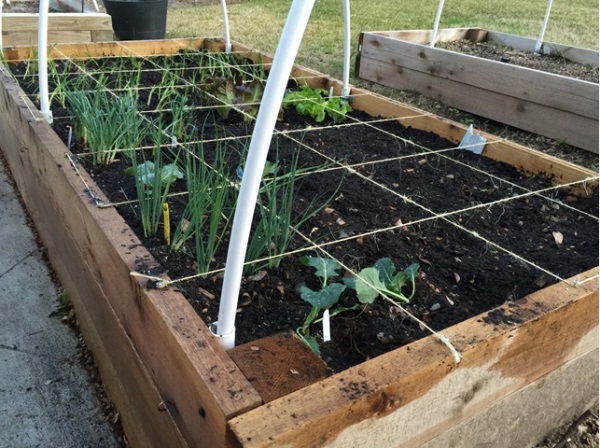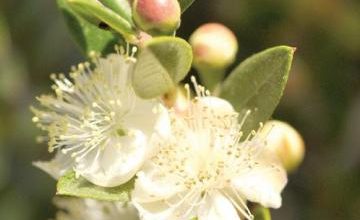How to make a good Seedbed for the Garden: Complete Guide

Very good to everyone,
The truth is that I am having a great time writing these experiences for you, I hope you like them and they are of some use to you

The seedlings of the garden
Today I come to talk to you about the seedbeds that I planted back during Holy Week and as some of you may have seen in the last chapters of the channel, they didn’t come out. Bad luck, the truth is that the seedbeds are something much more delicate than it seems and for them to grow it is not worth anything.
You already know from the articles on www.agrohuerto.com and the video below how seedbeds are made, so in this article we are going to analyze its elements in more detail and why mine didn’t grow…
Where to get the seeds of the nursery?
To start a seedbed you need seeds, the key raw material for a garden, you can buy seeds at any garden store, in the exchange markets, etc… The normal thing for people who have been with a garden for years is to save the seed of a melon that turned out especially good or something for the following year, preserving the seeds is also difficult because they can easily ferment in excessively humid environments.
If you are starting with a garden you can either buy them or ask a horticulturist that you know, the important thing is to know the origin, if they are organic seeds that are accompanied by the corresponding stamp, etc.
In my case, I contacted Semillas Clemente Viven, a large seed company that provided me with a large assortment of organic seeds without any problem to be able to carry out this educational channel for you and several orchard management manuals that provided me with a lot of information for the rookie I was back then (and I still am huh). This company has a lot of experience in the sector and is one of the few houses that provide fully certified organic seed. So the seed factor in that little failure is ruled out.

Types of seedbeds
A good seedbed also needs a space to be planted, on this aspect I can say without a doubt that it does not matter what you use, within a clear order, I have seen seeds grow on yogurts, fishmonger crates, jars of nocilla and a very long etc.
Use what you have most at hand without any remorse, the only advice is that they have an acceptable surface for the number of seeds you are going to plant, a sufficient depth so that the plant can root correctly (about 10 cm will suffice) and do not forget to make holes the bottom so that it can drain the water well after watering.
Seedling substrate
Another thing is the substrate you use, this aspect has been able to influence my seedbeds. The sprouting of a seed is a very delicate thing and in this germination phase many nutrients are necessary from the substrate you use.
As I already mentioned, my soil was not the best for a garden, I sifted it so that it was loose and the seedling could take root easily and I made an organic amendment with guano to provide it with phosphorus, potassium and nitrogen.
At the time I thought that this extra contribution would be enough for the substrate to acquire optimal properties for the growth of a seed, but it was not like that… After that experience it is worth investing a few euros in buying a peat and perlite substrate, or of any other type, in any garden store even in a store of everything to 100.
Commercial substrates come with the perfect balance of nutrients to give a seedling what it needs. If you are not convinced by what I am telling you, you can always plant several boxes with different substrates and see the difference between what you get.
Seedling irrigation
Last but not least, the seedbed must be watered daily and abundantly, the soil must be moist continuously but without going overboard, since if the seedbed becomes waterlogged the seeds can rot. The pressure of the water is also very important, the seedbed must be watered in the form of fine rain, excessive pressure can bury the seed at the bottom of the drawer and it will cost much more to grow with a whole layer of soil on top.
This is the key factor in my failure, since when I left the seedbeds in the town in the care of a friend (I had not thought that they would travel to Madrid) he may not have applied the correct pressure to the hose and the seeds would sink to the bottom. I noticed this when I saw that in the box each week that passed there was less thickness of soil and many goops on the walls of the box. Obviously I thank you very much for the favor you did me, I don’t think that the pressure was the most determining factor in the failure, but it did have a negative influence on the growth of the seeds.
With all this, I tell you that for the following year I am going to sow my seedbeds in January, as José, the great farmer at Agrohuerto.comTV, told me, the seeds will no longer freeze by then and you can have the seedlings ready for February. or March. I still have seed from Clemente Viven, so I will be able to sow certified organic seed, I will reuse the boxes from the previous year but I will fill some with a commercial organic substrate and others with the same soil from the previous year along with part of the compostfrom my compost bin and of course I will try to take them to Madrid to personally take care of their watering and care.
Little more, I will tell you how it turns out and I hope that this article will help you not to be afraid of making mistakes because you learn a lot from mistakes.
All the best!


![Photo of Pumpkin Pruning: [Dates and Ways to Do It]](https://www.complete-gardening.com/wp-content/uploads/2022/08/pumpkin-pruning-dates-and-ways-to-do-it-390x220.jpg)

![Photo of Prune a Plum: [Importance, Season, Tools, Considerations and Steps]](https://www.complete-gardening.com/wp-content/uploads/2022/08/prune-a-plum-importance-season-tools-considerations-and-steps-390x220.jpg)